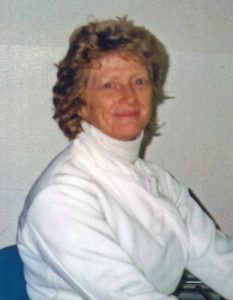 Cynthia Carter
Cynthia Carter
(Gesina Catharina Carter)
December 15, 1939 – December 22,1996
Cynthia Carter was born in the Netherlands in 1939 and moved to the United States at age 17. She graduated from the University of Michigan and received a PhD in physics from Carnegie Mellon University in Pittsburgh. In 1966 she moved to Washington, DC and taught physics at Catholic University while working at the National Academy of Sciences. In 1991, she transferred to the Department of Energy where she was chair of the Energy Materials Coordinating Committee in addition to working on material standards technology.
In 1974, Cynthia was captain of the US Women’s Fencing Team at the World Championships in Grenoble, France. In 1996, she fenced in the first international competition for women over age 50 in Germany, placing second in the foil competition. Later in her fencing career, she competed in women’s epee. Cynthia was a volunteer for fencing equipment control at the 1996 Atlanta Olympics. Cynthia, always the scientist, was chair of the US Fencing Association’s ASTM (American Society for Testing and Materials) subcommittee in charge of equipment safety. She published several articles in American Fencing Magazine and was very interested in improving the safety of masks, uniforms and weapons. She lobbied actively for adequate lighting at fencing tournaments. She published a list of 10 safety rules for fencing which the USFA published in a poster format to be displayed at all fencing clubs.
Cynthia was an active member of the Chevy Chase Fencing Club. The Chevy Chase Fencing Club honors Cynthia’s dedication to fencing by presenting the gold medalist in women’s epee at the Cherry Blossom Open a unique engraved trophy and adding the medalist’s name to the perpetual Cynthia Carter Trophy that is kept by the fencing club on permanent display.

